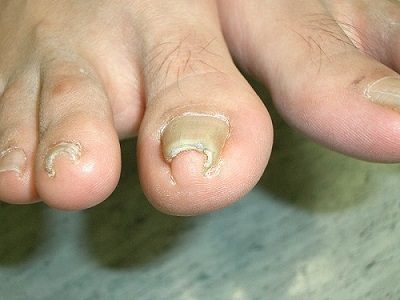
Ringworm Risks
Dermatophytes is the name of the fungi that causes the infection called ringworm. This infection can affect nails, skin, and hair. This infection is not dependent on sunlight in order for it to thrive and if one leaves it untreated, it has the ability to cause serious infections.
 Dead skin cells, toe nails, finger nails and hair contain keratin that dermatophytes live on. This infection is known as tinea capitis when it reaches the scalp. It is circular in shape and can extend with time. This rash is greyish or red in color and results in scaly skin. This form of infection is highly contagious and mostly occurs in young children, especially young girls, when they use borrowed hair clips or hair brushes. This infection can be passed on from one child to another. When the infection becomes severe it can reach the subcutaneous region and results in a condition called kerion. Now this form of infection makes the scalp spongy. It appears as inflamed skin, accompanied by a cavity filled with pus around that area and can result in permanent hair loss or scars when the pus bursts. There are chances of small pimples forming around the infected area. When the kerion bursts, the pus gets drained and can leave behind scars.
Dead skin cells, toe nails, finger nails and hair contain keratin that dermatophytes live on. This infection is known as tinea capitis when it reaches the scalp. It is circular in shape and can extend with time. This rash is greyish or red in color and results in scaly skin. This form of infection is highly contagious and mostly occurs in young children, especially young girls, when they use borrowed hair clips or hair brushes. This infection can be passed on from one child to another. When the infection becomes severe it can reach the subcutaneous region and results in a condition called kerion. Now this form of infection makes the scalp spongy. It appears as inflamed skin, accompanied by a cavity filled with pus around that area and can result in permanent hair loss or scars when the pus bursts. There are chances of small pimples forming around the infected area. When the kerion bursts, the pus gets drained and can leave behind scars.
Dermatophytes is found on healthy skin too, and can cause infections when it gains access to the areas where it can thrive. When it comes to the nails and the nail beds, this form of fungi can access the areas through the smallest microscopic tear in the cuticle, under the nails and in the skin around the nails.
 It is also known by the name tinea unguium or onychomycosis. It is estimated that around 10% of the population is affected by this form of infection. In its milder form, it can lead to the discoloration of the nails. In more severe cases, it can lead to nail deformity as well as to the crumbling of the nails.
It is also known by the name tinea unguium or onychomycosis. It is estimated that around 10% of the population is affected by this form of infection. In its milder form, it can lead to the discoloration of the nails. In more severe cases, it can lead to nail deformity as well as to the crumbling of the nails.
In the typical case of a ringworm infection, the infection causes a rash on the skin along with a scaly appearance. The small tears in the skin provide easy access for this form of fungi to enter the skin’s layers and cause infections. Infections caused by bacteria of the secondary type are a common complication that is found in ringworm infections. Bacteria like streptococcus or staphylococcus can be found on healthy skin and they then enter the skin through minor tears.
They can also enter when the chemical barrier on the skin, which repels the pathogens, gets compromised. Cellulitis is the name of the infection that is caused by this particular form of bacteria. The common symptoms that accompany this form of infection are pain, fever, fatigue and tenderness. When it is a severe case, the infections can spiral into bone infection, gangrene and meningitis.
TOP 5
ATHLETE'S FOOTTreatments |
|||||
| Athlete's Foot Clear | Naturasil | Healing Natural Oils | Forces of Nature | DeSensua | |
|---|---|---|---|---|---|
| 1 | 2 | 3 | 4 | 5 | |
| Price (1 bottle) Price (6 bottles) *Best Value |
$49.95 $139.80 |
$31.30 $169.00 |
$29.95 $161.73 |
$34.85 $188.00 |
$23.99 $129.55 |
| Overall Rating | 99.30% | 82.20% | 79.40% | 74.80% | 66.30% |
| Effectiveness |      |      |      |      |      |
| Speed of Results | Extremely Fast | Good | Average | Slow | Slow |
| Quality of Ingredients | Premium | Good | Good | Average | Average |
| Customer Satisfaction Evaluation | 99.10% | 80% | 75% | 74% | 65% |
| Safety Evaluation | Safe for Use | Safe for Use | Safe for Use | Safe for Use | Safe for Use |
| Customer Service Rating |      |      |      |      |      |
| Reorder Rate | Highest | Good | Average | Average | Average |
| Return Policy | Risk Free | Risk Free | Risk Free | Risk Free | Unopened Only |
| Success Rate | 99.20% | 82% | 73% | 73% | 62% |

 Subscribe Now
Subscribe Now











